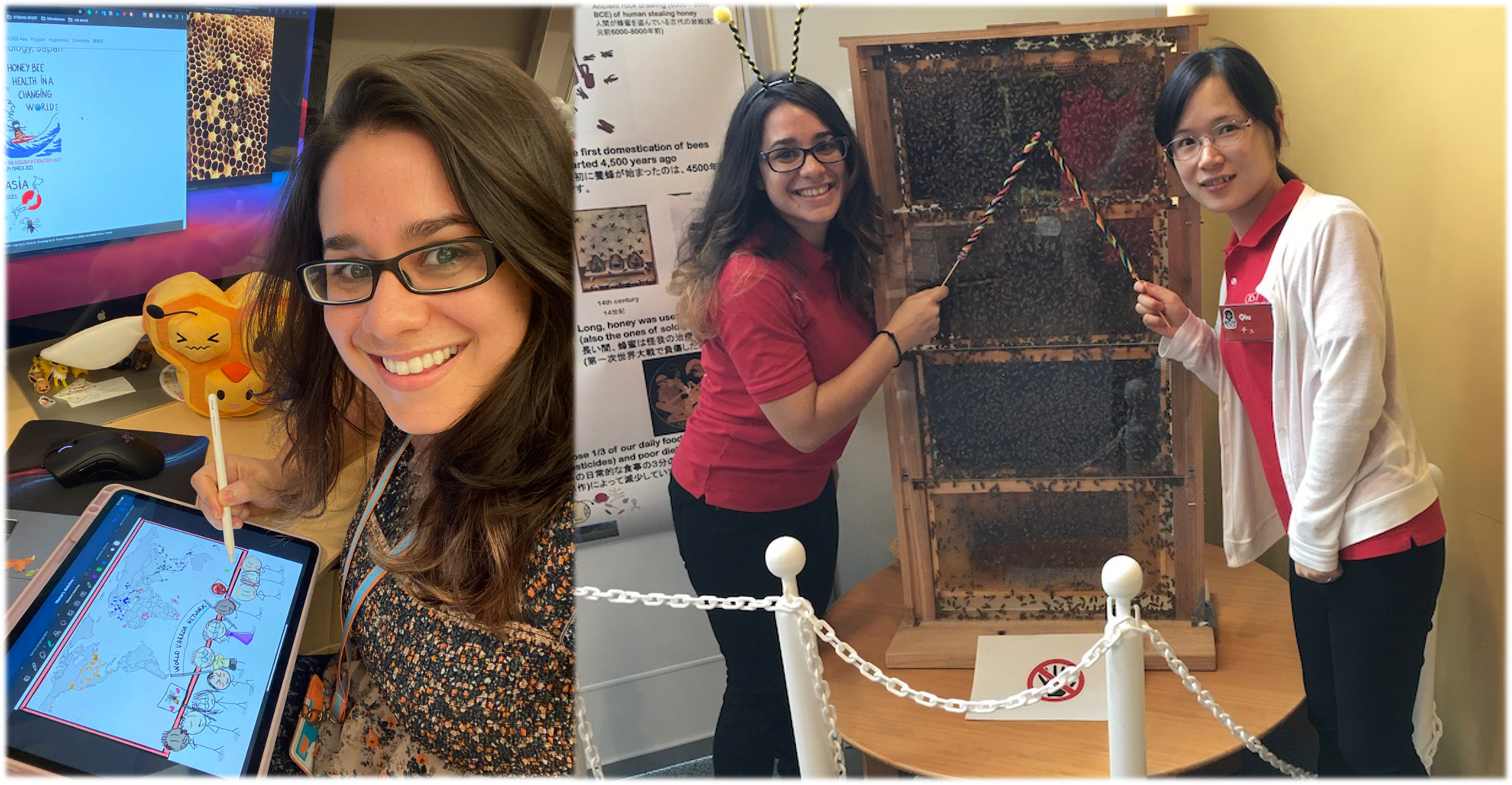Maeva TECHER, PhD

Postdoctoral Fellow, Ecology and Evolution Unit, JSPS-OIST
Brief Bio: Hi there and thank you for stopping by our event website! I am evolutionary biologist and an island-hopper, born and raised in the Reunion Island paradise and now living in the beautiful Okinawa in Japan. I am fascinated by the rich biodiversity that surrounds us and I am specifically interested in studying the genetic mechanisms underlying diversification. As an islander, I am very sensitive to global biological invasion and their impact on biodiversity.
I started working with the Western honey bee since my master and carried my PhD in Population Genetics and Ecology at the University of Reunion Island. My work illustrated how native populations of A. mellifera unicolor, evolved in isolated Indian Ocean islands and how rapidly changes could occur upon recent human arrival. Now I am finishing my 1st postdoctoral research at the Ecology and Evolution Unit at OIST. There, I met for the first time what is considered as the beekeeper's nightmare: Varroa destructor mites. I decided to focus on understanding the origin of host switches by the parasitic honey bee Varroa mites and its subsequent spread worldwide in the past 100 years. Following the release of our two new reference genomes, I built the world largest Varroa mites’ collection (>1500 samples from 61 countries) with an amazing worldwide network, I hope to unlock the demographic and genetic keys to Varroa mite success using whole-genome sequencing.
Varroa mites, honey bee, population genetic, whole genome sequencing, invasion
Side Note: Being always in touch with beekeepers and locals, I am always looking forward to sharing my knowledge or scientific facts/concepts to a wide audience. This led to awesome collaboration such as the “Honey & Coral” with Okinawa Onna-village and our OIST lab you can hear about at the beekeeper’s seminar.
I hope you will enjoy the program that Vienna, Nurit and I have prepared for you. Do not hesitate to interact with us on Slack, via email and let’s strengthen the virtual honey bee research and adapt to the pandemic new-normal!
The untold story of Varroa mite successful invasion unraveled by worldwide population genomics
Maeva A. Techer*, 達矢遠藤Tatsuya Endo, and Alexander S. Mikheyev
*E-mail: maeva.techer@oist.jp; maeva.angelique.techer@gmail.com
Collaborators/Regional Collectors (by alphabetical order):
Mike Allsopp, Gabrielle Almecija, Alix Andrieu, Karina Antúnez, Alireza Arab, Marina Basualdo, Alexis Beaurepaire, Tjeerd Blacquiere, Axel Brockmann, Krisztina Christmon, Shahram Dadgostar, Bjørn Dahle, Ashutosh Das, Lilia I. De Guzman, Pilar De la Rua, Helene Delatte, Shishira D., Usman H. Dukku, Nurit Eliash, Olivier Esnault, Jay Evans, Nizar J. Haddad, Barbara Locke, Stephen J. Martin, Alison McAfee, Malik Mukminov, Gregoire Noel, M. Alice Pinto, Samuel Ramsey, Juliana Rangel, John M. K. Roberts, Peter Rosenkranz, Jarkko Routtu, Eduard A. Shuralev, Jevrosima Stevanovic, 高橋純一Jun-ichi Takahashi, Dennis vanEngelsdorp
In the last decades, Western honeybee populations all over the world are in continous battle against introduced parasitic Varroa mites. Since Varroa destructor switched from its original host the Eastern honeybee to the Western honeybee, it has successfully spread almost worldwide and is considered as the most damaging pest in beekeeping. The high inbreeding in combination with an important loss of genetic diversity following host switch led to the assumption that V. destructor invasive populations originated from two quasi-clonal strains. Yet, Varroa mites are persisting after 80 years of invasion and independently develop novel traits such as acaricide resistance. How can this specialist parasite evolve new traits despite an initial loss of genetic diversity?
To identify the key demographic and genetic mechanisms behind Varroa invasive success, we took advantage of our Vdes3.0 reference genome and the unique Varroa mite collection that we steadily build in the past five years. The sampling participation network covers most of V. destructor invasive and native range and involved honey bee researchers, beekeepers as well as veterinary services worldwide. To date, the collection gathers 1,660 mites from 61 countries - including all known Varroa species on different hosts - and with a sampling period spanning from 1989 to 2021. Using whole-genome resequencing of 1,350 V. destructor (including 32 mites from A. cerana), we found ~3.3 million variable sites throughout the genome. The identity of Varroa present on A. mellifera populations was confirmed and compared to genomes of sister species and non-switching mites (V. jacobsoni, V. rindereri, V. underwoodi and Varroa sp. type “Luzon” and type “Mindanao”). In my talk, I will briefly present how from a single mite library, we were able to 1) infer host information (metagenomics), 2) reveal previously undetected host switches (mitogenomes) and 3) show that at least 10 genetic populations co-exist worldwide (nuclear genomes). I will explain how these results will help us to further elucidate the origin and evolution of V. destructor on its new host. As parasitic mites are continuously spilling-over from Asian Apis to A. mellifera, our knowledge on V. destructor success could help us in predicting future outbreaks.